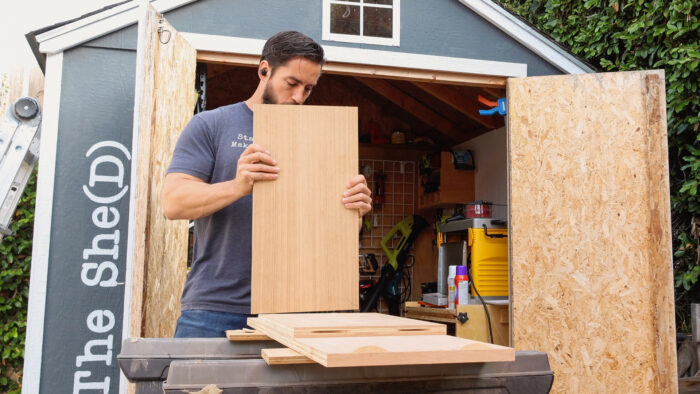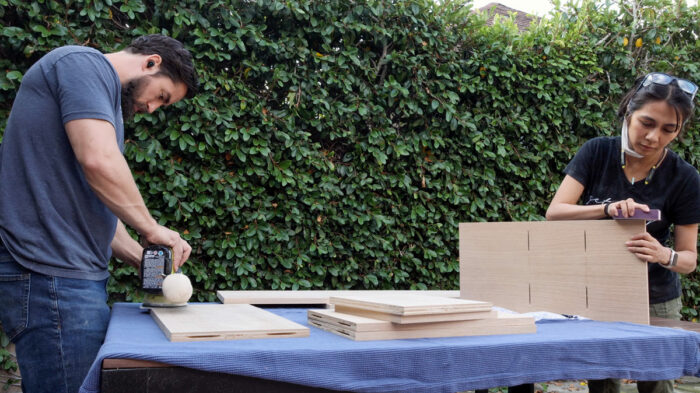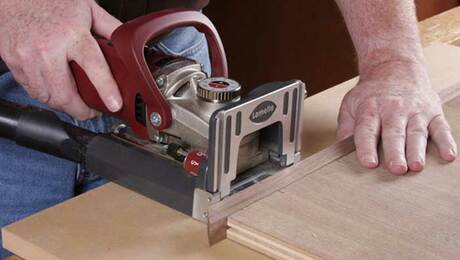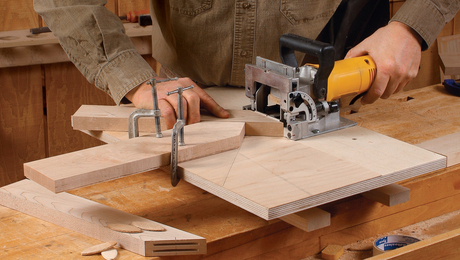Let’s all say it together now: Woodworking is an expensive hobby. Sure, one could argue that one well-made table that costs $1,000 in materials is far less expensive long-term than buying a $500 one every few years for the next five decades, and that’s a strong argument. But I should first remind the early 20-something buried deep inside you that $1,000 ain’t chump change. Secondly, that equation overlooks the thousands of dollars in machinery and hand tools in a typical shop, let alone the shop space itself (which, given the current housing market, is hardly “free”). How is one supposed to create the necessary mortise-and-tenon joinery or those classic breadboard ends sans expensive equipment? What is a person to do with an insatiable desire to make furniture and a budget closer to Jiminy Cricket than Jeff Bezos?
One word. Biscuits.

Here’s the honest truth about woodworking: It’s not complicated. It’s a series of steps cutting wood into smaller parts to glue them back into larger parts. That’s it. That’s the whole game. What method you choose to employ to meet that end is entirely up to you. Want to spend a couple grand on hand tools or router jigs to make the finest dovetails this side of the Mississippi? Go for it. But you know what joins a corner just as well? Biscuits. An industry standard for decades, the biscuit is severely underrated in the furniture world. A biscuit joiner is cheap (comparatively) and the reality is every cabinet you’ve ever purchased that wasn’t made in a studio furniture shop was made with biscuits. And they’ve held up more than OK. I put biscuits to good use recently working in my friend’s shed to build her a new bathroom vanity. With nothing more than a few basic tools, we were able to make a lovely little cabinet that complements her bathroom really nicely.
If you’re looking to start building objects, all you really need are the following: something to cut, something to join, and something to surface. You can start making cabinets tomorrow with nothing more than a circular saw, a biscuit joiner, and a sander. A little glue and a couple cheap clamps later and you’ve got yourself a custom cabinet. But what about that aforementioned dining table? You can’t make a table with just those tools, right? You’d better believe you can. Just get your wood milled S3S at the lumberyard. Then you can proceed with the same three tools to build the dining table you’ve always wanted. Don’t think biscuits will hold up to the wear and tear of a dining table, eh? Consider this: All the joinery on my workbench, which I made about 13 years ago, was done with biscuits. And it’s my daily use bench. It has lived in four different shops in that time, none of which were climate-controlled, and I have never had an issue. I’ll say it again: The biscuit is severely underrated.

Don’t let anyone tell you that you need this or that to start woodworking. The best tool for you is the tool you can afford. You can get a biscuit joiner, a circular saw, and a random-orbit sander secondhand for less than $500 total. Then take what precious few dollars you have left over, head to the lumberyard, and purchase the least expensive domestic hardwood you can find. Beech is a great choice. Red oak is also relatively inexpensive. Both will make a table that will last for decades.
Now go and be merry, my friends. Biscuit the world together. One project at a time.
Erik Curtis
ENCurtis.com

Biscuit Joinery Tips and Tricks

Fine Furniture with Biscuit Joints

Straight Cuts with a Circular Saw
Sign up for eletters today and get the latest techniques and how-to from Fine Woodworking, plus special offers.





